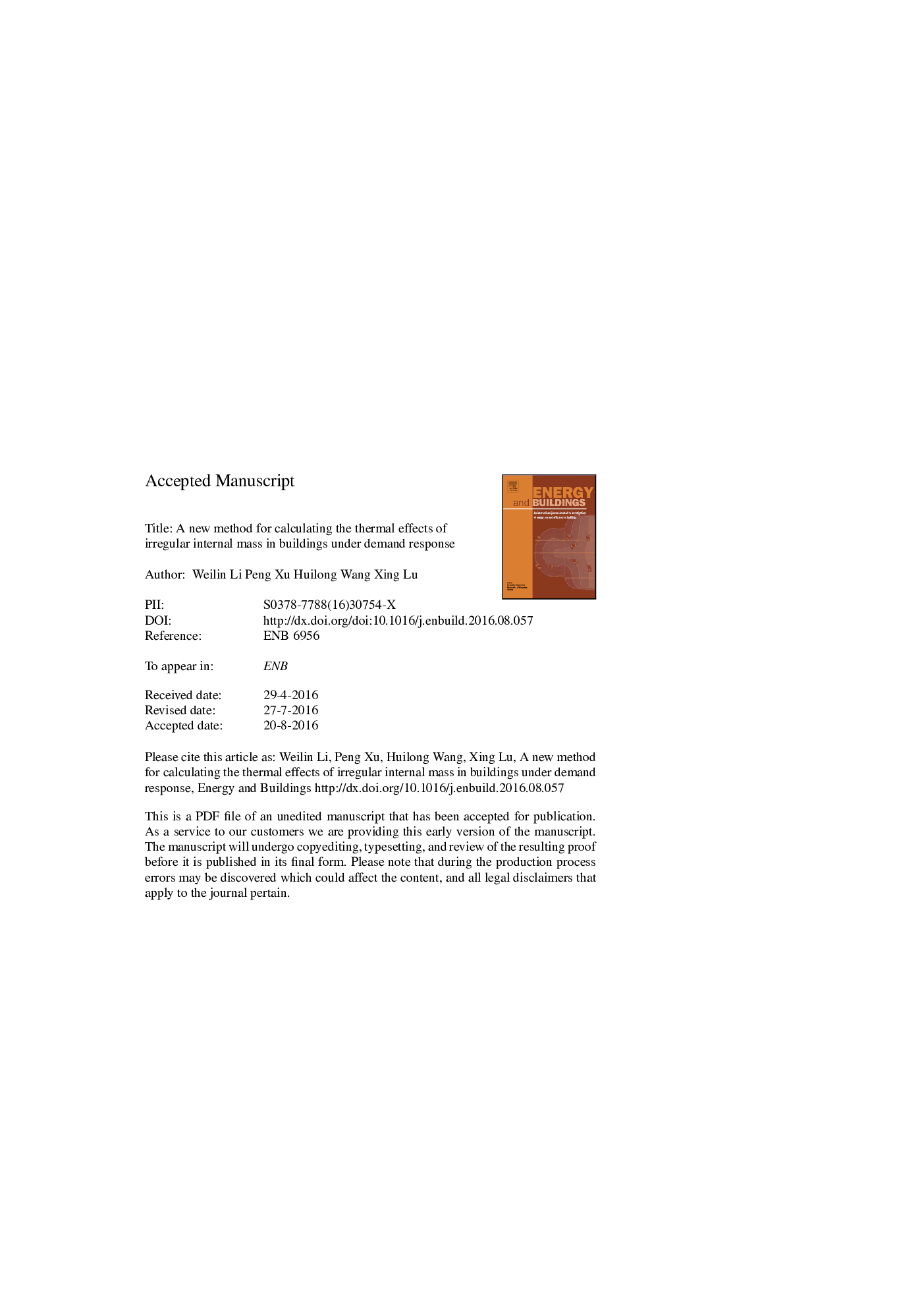| Article ID | Journal | Published Year | Pages | File Type |
|---|---|---|---|---|
| 4919634 | Energy and Buildings | 2016 | 33 Pages |
Abstract
Accurately modeling thermal storage and discharge play a pivotal role in predicting the peak savings of demand response buildings. Considerable studies have been conducted on the transient thermal behavior of building envelopes, much of which has focused on the thermal mass effects of building envelopes and floors. However, it is unclear how to precisely describe the cooling storage effects of irregular internal mass such as furniture. EnergyPlus and other simulation tools have internal mass models, but these models require ambiguous inputs such as internal mass surface area, thickness, volume and thermal properties. These inputs are impossible to obtain due to the irregular shapes and random spatial distributions of internal mass. In this paper, the novel “Effective Area” method is proposed that improves the theory of the conventional “Equivalent Slab” method. The new method establishes a relationship between the actual furniture and the equivalent furniture through a converted coefficient in the dynamic heat transfer equations. Experiments are conducted to test and verify the accuracy of the new method and to calculate common parameters, such as the converted coefficient and the distribution density of the irregular internal mass in some typical office setups.
Related Topics
Physical Sciences and Engineering
Energy
Renewable Energy, Sustainability and the Environment
Authors
Weilin Li, Peng Xu, Huilong Wang, Xing Lu,
